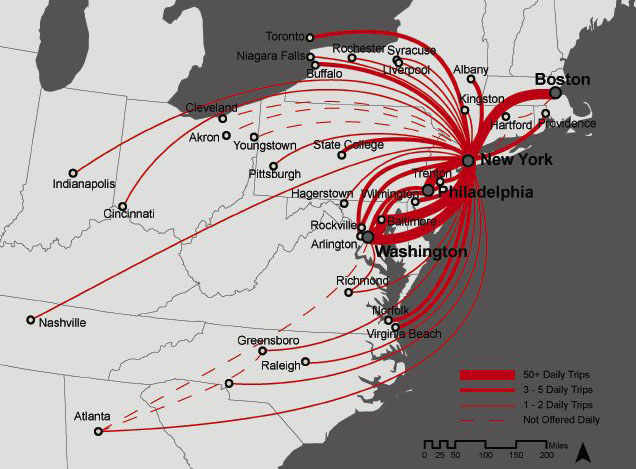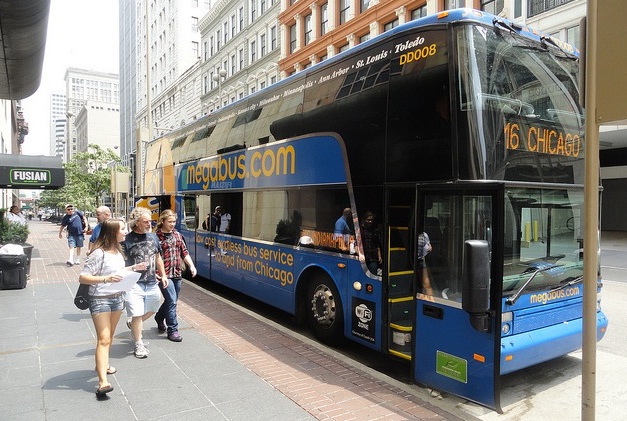The party line was this: I moved back to Cincinnati because my freelance work was rarely based out of New York City — counter to my expectations when first striking out as a self-employed writer and video producer — so I had an opportunity to finally get away from Gotham’s pound-of-flesh rents. Hello, profit-margin, right?
Truly, the full answer defied the time-limits of polite cocktail-party conversation. Every city in the country offered a lower cost-of-living and a healthy handful promised opportunities to share my life with good friends and family. But only one city had gotten into my blood.
Large crowds gather outside the CAC to get in to the Shepard Fairey opening night [LEFT]. Great American Ball Park is the home of the nation’s oldest professional baseball team the Cincinnati Reds [RIGHT]. Photos taken by Jeremy Mosher & Randy Simes.
A recent Vanity Fair article written by A. A. Gill explored the Creation Museum in Petersburg, KY, and opened with an offhand dig at Cincinnati, saying that “it’s not in the nature of stoic Cincinnatians to boast, which is fortunate, really, for they have meager pickings to boast about.” Gill is of that breed of lazy sensationalists more concerned with eliciting reaction than approaching a nuanced — even intimidating, surely — mental space, and this line, casually flippant, and really, totally extraneous to the rest of the story, served his aim. Picked up by blogger Katy Crossen earlier last week, Crossen challenged local bloggers and Twitter-followers to boast why they are proud of Cincinnati. And the responses began to pour in, detailing everything from the Zaha Hadid-designed Contemporary Arts Center to the world’s first professional baseball team.
Me? When I first moved to New York for college, I was often asked to describe Cincinnati, and I came to rely on a fond but accurate snapshot: “Big city amenities; Small-town feel.” We account for ten Fortune 1000 companies — including 75% of Ohio’s entries in the Top 100 — but we value our neighborhoods, and local religious roots have connected millions of people through Catholic schools. Introduce me to anyone from Cincinnati and give us ten minutes together, I would say, and we’ll come up with at least one mutual acquaintance.
Seven years into my New York adventure, I loved being able to indulge in all of my passions, fed by the culinary offerings, the public transportation, the neighborhood movie theaters, and the vast comedy scene. But I was suddenly disappointed to realize that nearly a decade on, the emotional connection to my surroundings had only grown so deep. Perhaps the size of the city was responsible, but I was struck by an epiphany that the things tying me and my peers to New York were most often cultural and career opportunities. Friendships were nice, but the relationships weren’t the priority or the motivating factor for residence — even if social opportunities were.
I would argue that even with amazing museums, pro sports, and an emerging cultural scene, community remains the Queen City’s defining trait. And I would suggest that beyond the interpersonal relationships that grow so strong here, our defensiveness derives from our relationship to the city itself. Cincinnati, the whole intangible idea of it — the people, plants, buildings and backstory — functions like a family in a way that other cities with more transient populations don’t. It’s only natural for a person to defend his home, as an affirmation of his life choices, if nothing else; our relationship to Cincinnati is, I think, more complicated and more rich. We love it even when it frustrates us. We shape it, even as we are shaped by it.
The sun sets on my time in New York City [LEFT], and I start my journey anew in the city I love [RIGHT]. Photos by Jeremy Mosher & Randy Simes.
And I think that’s the difference: because Cincinnati is inhabited and led by homegrown folks probably more than any other city our size or bigger, a sort of mutual osmosis goes on. A Cincinnatian owns a stake in this city; woe to those who aspire only to rent it for a few convenient years. Yes, new residents have been known to be intimidated initially, but they can still become part of the family, part of this wholly unique place and experience, if they’re willing to put up with — and occasionally revel in — the quirks and foibles. (We wouldn’t let a family member bring a new spouse into the herd without doing due diligence, right?) Cincinnati will look out for us. It will give us the opportunities to outgrow it, but never let us forget where we came from. It will welcome us back, even if we feel the need to leave the nest for years at a time.
Returning from a business trip to the far side of the Atlantic last weekend, I had a layover in New York. Few things in this world are breathtaking like a banking bird’s-eye view of Manhattan at night, but as I picked out landmarks from my vantage high above the city I had long called my home — and meant it — I recognized something new: that I am thrilled to be living in Cincinnati again. Do I miss life in New York? Certain elements, yes. But given a choice, give me family, evolving but ever-loyal, sitting proudly on this big bend in the banks of the Ohio.






